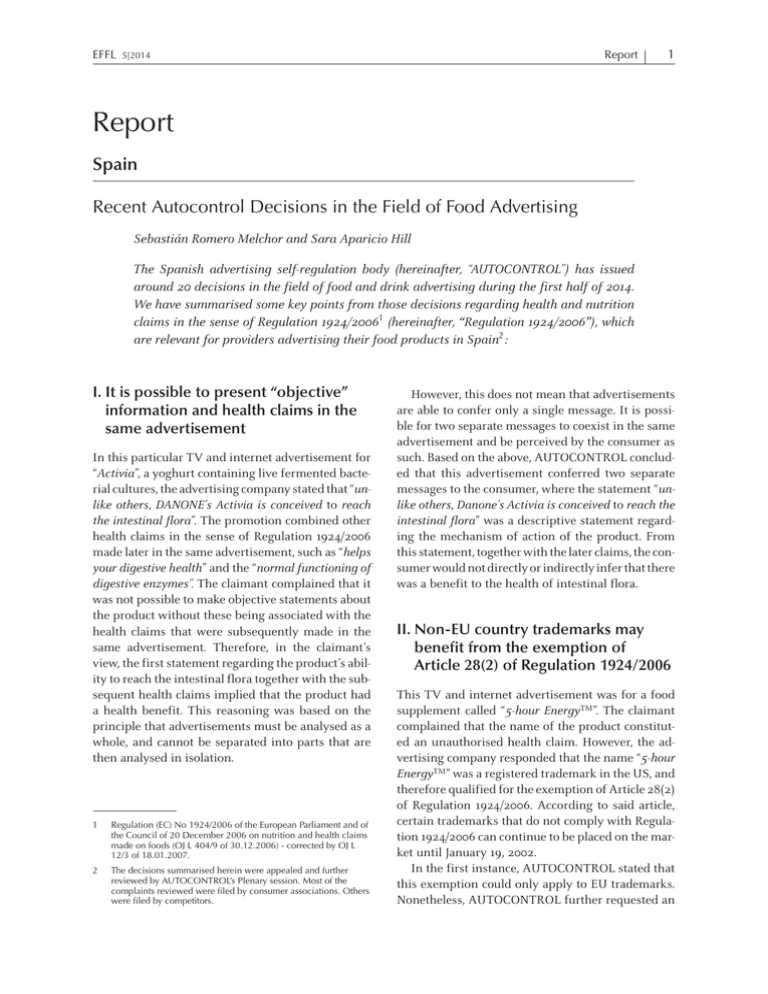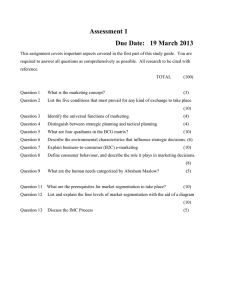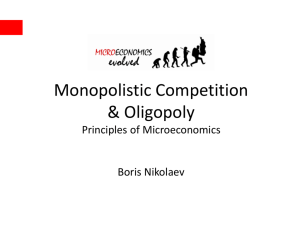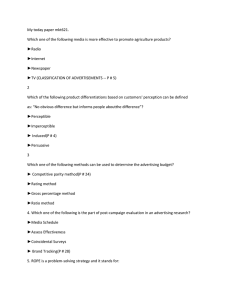Report Spain Recent Autocontrol Decisions in the Field of Food Advertising
advertisement

EFFL Report 5|2014 1 Report Spain Recent Autocontrol Decisions in the Field of Food Advertising Sebastián Romero Melchor and Sara Aparicio Hill The Spanish advertising self-regulation body (hereinafter, “AUTOCONTROL”) has issued around 20 decisions in the field of food and drink advertising during the first half of 2014. We have summarised some key points from those decisions regarding health and nutrition claims in the sense of Regulation 1924/20061 (hereinafter, “Regulation 1924/2006”), which are relevant for providers advertising their food products in Spain2: I. It is possible to present “objective” information and health claims in the same advertisement In this particular TV and internet advertisement for “Activia”, a yoghurt containing live fermented bacterial cultures, the advertising company stated that “unlike others, DANONE’s Activia is conceived to reach the intestinal flora”. The promotion combined other health claims in the sense of Regulation 1924/2006 made later in the same advertisement, such as “helps your digestive health” and the “normal functioning of digestive enzymes”. The claimant complained that it was not possible to make objective statements about the product without these being associated with the health claims that were subsequently made in the same advertisement. Therefore, in the claimant’s view, the first statement regarding the product’s ability to reach the intestinal flora together with the subsequent health claims implied that the product had a health benefit. This reasoning was based on the principle that advertisements must be analysed as a whole, and cannot be separated into parts that are then analysed in isolation. 1 Regulation (EC) No 1924/2006 of the European Parliament and of the Council of 20 December 2006 on nutrition and health claims made on foods (OJ L 404/9 of 30.12.2006) - corrected by OJ L 12/3 of 18.01.2007. 2 The decisions summarised herein were appealed and further reviewed by AUTOCONTROL’s Plenary session. Most of the complaints reviewed were filed by consumer associations. Others were filed by competitors. However, this does not mean that advertisements are able to confer only a single message. It is possible for two separate messages to coexist in the same advertisement and be perceived by the consumer as such. Based on the above, AUTOCONTROL concluded that this advertisement conferred two separate messages to the consumer, where the statement “unlike others, Danone’s Activia is conceived to reach the intestinal flora” was a descriptive statement regarding the mechanism of action of the product. From this statement, together with the later claims, the consumer would not directly or indirectly infer that there was a benefit to the health of intestinal flora. II. Non-EU country trademarks may benefit from the exemption of Article 28(2) of Regulation 1924/2006 This TV and internet advertisement was for a food supplement called “5-hour EnergyTM”. The claimant complained that the name of the product constituted an unauthorised health claim. However, the advertising company responded that the name “5-hour EnergyTM” was a registered trademark in the US, and therefore qualified for the exemption of Article 28(2) of Regulation 1924/2006. According to said article, certain trademarks that do not comply with Regulation 1924/2006 can continue to be placed on the market until January 19, 2002. In the first instance, AUTOCONTROL stated that this exemption could only apply to EU trademarks. Nonetheless, AUTOCONTROL further requested an 2 Report official interpretation of Article 28(2) of Regulation 1924/2006 from AECOSAN3, who further asked SCOFCAH4 whether trademarks from non-EU countries may also benefit from the exemption of Article 28(2) of Regulation 1924/2006. SCOFCAH considered that non-EU country trademarks may also benefit from the exemption so long as they can prove that the product bearing the trademark was placed on the European market prior to January 1, 2005. III. Specifying the amount of time during which a product provides energy exceeds the flexibility principle The same TV and internet advertisement for the food supplement called “5-hour EnergyTM” was reviewed in light of Article 1(3) of Regulation 1924/20065, pursuant to which a trade mark, brand name or fancy name which may be construed as a nutrition or health claim may be used provided that it is accompanied by an authorised, related nutrition or health claim. The advertisement included the authorised claim “contains vitamins B6 and B12 which contribute to the reduction of tiredness and fatigue”. AUTOCONTROL considered that the name “5hour EnergyTM” exceeded the language authorised for claims on the reduction of tiredness and fatigue. This was due to the fact that the name generated an expectation in the consumer regarding the immediateness and duration of the product’s effect on energy levels, which is a more concrete health effect. These expectations go beyond those produced by the authorised message for vitamins B6 and B12, which merely refer to the vitamins’ contribution towards the reduction of tiredness and fatigue. EFFL comparative advertising since the comparison with its fries was clearly established in the advertisement. The advertising company stated that the main message only indicated that these were a new type of fries, which contained 30% less fat whilst keeping their full taste. AUTOCONTROL considered that, even if the comparison was not made in the main part of the advertisement, it was perfectly legible and therefore understandable to the consumer as a comparison, which qualified it as a case of comparative advertising. V. Compliant comparative nutrition claims must also comply with comparative and misleading advertising principles The same TV, radio, panel and internet advertisement company for fries also defended that this was not a case of comparative advertising because the statement “30% less fat* ”, whilst stating separately, in fine print through a scroll “ *compared to fries prepared other brands leaders in the fast food market” was clearly a comparative nutrition claim. AUTOCONTROL understood that Article 9 of Regulation 1924/2006 allows it to simultaneously review a comparative nutrition claim in light of Regulation 1924/2006, as well as in light of Directive 84/450/EEC concerning misleading and comparative advertising6, if the comparative nutrition claim expressly identifies a competitor’s product. Since the complainant submitted proof that the advertising company’s fries had only 0.7% less fat, instead of the alleged 30%, AUTOCONTROL considered the advertisement misleading. 3 The “Agencia Española de Consumo, Seguridad Alimentaria y Nutrición” is the Spanish competent authority in the fields of food safety and nutrition, and also represents Spain in SCOFCAH. 4 Standing Committee on the Food Chain and Animal Health, made up of representatives from EU Member States, chaired by a European Commission representative. 5 Since the advertising company was unable to prove that the product had been placed on the EU market prior to January 1, 2005, it therefore could not benefit from the exemption of Article 28(2) of Regulation 1924/2006. 6 Directive 84/450/EEC of 10 September 1984 concerning misleading and comparative advertising (OJ L 250, 19.9.1984, p. 17). IV. Consumers read the fine print In this case, a TV, radio, panel and internet advertisement claimed that the advertising company’s fries had “30% less fat* ”, whilst stating separately, in fine print through a scroll “ *compared to fries prepared other brands leaders in the fast food market”. The complainant claimed that this was a case of unauthorised 5|2014





